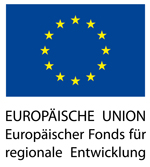ASTM F2694/F2790 Lumbar total facet prothesis
We offer test methods to determine the functionality, kinematics and abrasion of motion-sustained facet joint implants for the lumbar spine according to ASTM F2694 and F2790. These implants serve to support the functional units of the spine, whereby the mobility is to be retained by replacing the natural facets. In all test methods, the implants are firmly connected to test-blocks made of polyethylene and clamped in the test device. From the following range, we will select the appropriate test procedures for your individual facet implants:
- Static test methods
1. Mechanical properties under translation:
A constant displacement with max. 25 mm/min is applied to one of the test-blocks, taking three directions into account: anterior-posterior, superior-inferior and medial-lateral. The respective force-displacement curve is recorded and evaluated with regard to the mechanical properties (including stiffness and strength).
2. Mechanical properties under rotation:
A torque of max. 60 °/min is applied to one of the test-blocks, taking three directions of rotation into account: flexion-extension), axial torsion and lateral bending. The respective torque-angle-of-rotation curve is recorded and evaluated with regard to the mechanical properties (including stiffness and strength). - Dynamic test method
Following the static tests, the tests are performed dynamically with new test specimens over 10 million cycles. A constant ratio of the maximum to the minimum load of R = 10 for the translation tests and R = 10 for the rotational tests (or R = -1, respectively, if the implant is rotated bilateral) should be ensured. The dynamic examination is repeated with different maximum loads until the difference between two loads, at which the implant dynamically fails or survives, is less than 10%. The test is completed when 10 million load cycles are reached or a mechanical failure of the implants occurs. In addition, the test is carried out in saline solution at 37 °C., but can be repeated in a physiological test medium. - Wear tests
For the wear tests, the test specimens are clamped in a test chamber filled with Ringer solution or calf serum at 37 °C. For a duration of 10 million cycles, different motions of the implants are performed, with a constant axial load of 400 N: ± 7.5° flexion-extension, ± 6° lateral bending to the left and right and ± 3° axial rotation to left and right. All test specimens are weighed and measured before and after the dynamic load in the clean and dry state in order to determine the abrasion. In addition, the surfaces are evaluated with optical measuring methods. In addition, after 1 million cycles, the medium is exchanged and the abrasion particles are filtered out and analyzed.
During the tests, two control components must be stored in a chamber with the same test medium. In this way, the weight increase of the test bodies by the absorption of the test medium can be compensated, which would otherwise falsify the results.





